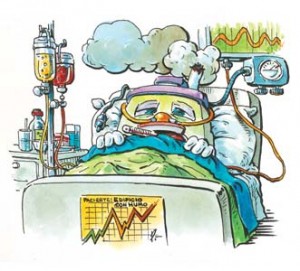 Before you ask yourself “what is sick building syndrome?”, I want you to take a personal inventory of what your is health like? Right now. If, after your personal health inventory, you acknowledge that you have been sick often, and you spend the majority of your time within the same building, then chances are it’s SBS and not the common cold. Before you click to another blog post or another website altogether because you find it so hard to believe, please ask yourself this, “What is sick building syndrome?”
Before you ask yourself “what is sick building syndrome?”, I want you to take a personal inventory of what your is health like? Right now. If, after your personal health inventory, you acknowledge that you have been sick often, and you spend the majority of your time within the same building, then chances are it’s SBS and not the common cold. Before you click to another blog post or another website altogether because you find it so hard to believe, please ask yourself this, “What is sick building syndrome?”
Typically speaking, SBS is caused by indoor air pollution via poor ventilation and chemical and biological contaminants. Biological contaminants include, but are not limited to: pollen, molds, bacterias, pet dander and insect debris. Chemical contaminants can come from a wide variety of sources including carpeting, paint and airborne chemicals such as air fresheners. As such, our lungs can only take and filter but so much, sometimes leaving us with potential short-term or long-term illnesses. SBS is very real, especially if you are within the confines of a building for extended periods of time every day. Illnesses and symptoms that could develop include allergies, skin, eye, nose and throat irritations as well as other, more serious, ailments.
Although leaving the building can almost immediately relieve the symptoms you may be experiencing, there are sometimes lingering and long-term effects caused by SBS. Long-term effects of SBS can include the development of allergies, fibromyalgia, and even cancer. Perhaps the best indicator to whether or not you are suffering from SBS is to see if others within the building exhibit or complain of similar symptoms which you may be exhibiting. So what can be done to limit these symptoms or mitigate any long-term effects to your health? One of the easiest ways to lower your chances of developing SBS symptoms is to step outside often during the day, every day. Being that the outdoor air is more often than not much cleaner than indoor air, it would behoove you and others to take frequent steps outside and/or to actually go outdoors for your lunch breaks.
As well, speak to your supervisor or manager about taking steps to lower the contaminants within the building, many of which are very simple. Besides removing and replacing the air filters of the AC system, simply putting some indoor house plants throughout the building as certain plants can absorb some hazardous airborne chemical contaminants. Their other obvious benefit is to provide pure oxygen, which we need to live. Another tactic to reducing these contaminants and allergens is to make sure maintenance cleans thoroughly and often and to make sure any leaks in the plumbing are fixed. Excess moisture promotes mold growth, so the fewer leaks there are the better.
There are many ways to diagnose whether or not you and/or your co-workers suffer from sick building syndrome and just as many ways to prevent or lower the risks of developing symptoms of SBS. Stay safe and productive.
